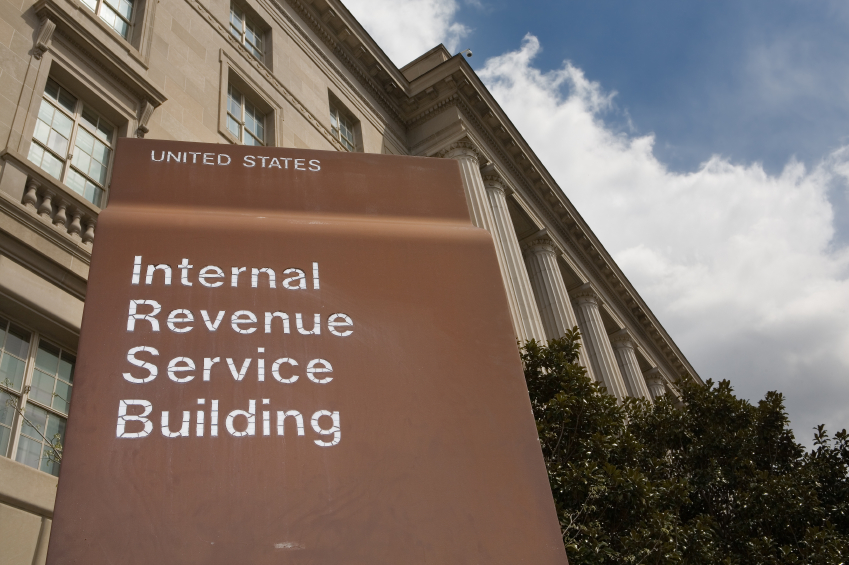Taxes
IRS Gives Employers ‘A Way Out’ if They Filed an Improper ERC Claim
The IRS on Thursday offered steps small businesses can take to cancel their tax credit claim if they have doubts about its legitimacy.
Oct. 19, 2023

More than a month after the IRS said it was temporarily shutting down the processing of employee retention credit (ERC) claims due to a surge of questionable submissions, the agency on Thursday offered steps small businesses can take to cancel their tax credit claim if they have doubts about its legitimacy.
The new withdrawal option allows certain employers that filed an ERC claim but have not yet received a refund to rescind their submission and avoid future repayment, interest, and penalties. Small businesses that sent in an ERC claim that is still being processed can withdraw their claim and avoid the possibility of getting a refund for which they are ineligible.
Claims that are withdrawn will be treated as if they were never filed, and the IRS will not impose penalties or interest on those businesses, the agency said earlier today. However, the IRS warned that those who willfully filed a fraudulent claim, or who helped or conspired in that type of conduct, will not be exempted from possible criminal investigation and prosecution.

“The IRS is committed to helping small businesses and others caught up in this onslaught of employee retention credit marketing,” IRS Commissioner Danny Werfel said in a statement on Oct. 19. “The aggressive marketing of these schemes has harmed well-meaning businesses and organizations, and some are having second thoughts about their claims. We want to give these taxpayers a way out. The withdrawal option allows employers with pending claims to avoid future problems, and we encourage them to closely review the withdrawal option and the requirements. We continue to urge taxpayers to consult with a trusted tax professional rather than a marketing company about this complex tax credit.”
The refundable tax credit, which was authorized by the $2.2 trillion coronavirus package known as the Cares Act, aimed to motivate small businesses to keep employees on staff during the early days of the COVID-19 pandemic as unemployment rates surged. The IRS has received more than 3.6 million ERC claims since the program was enacted.
But a good chunk of those tax credit claims have been fraudulent, forcing the IRS on Sept. 14 to put an immediate moratorium on the ERC program until at least Dec. 31. Calling it a “barrage of aggressive broadcast advertising, direct mail solicitations, and online promotions,” the IRS said many ERC marketers and promoters are “wildly misrepresenting and exaggerating who can qualify for the credits.”
In its announcement last month on pausing the ERC program, the IRS mentioned it was finalizing details for a special withdrawal option that would be available to filers of the more than 600,000 claims that await processing.
Employers can use the ERC claim withdrawal process if all of the following apply:
- They made the claim on an adjusted employment return (Forms 941-X, 943-X, 944-X, CT-1X).
- They filed the adjusted return only to claim the ERC, and they made no other adjustments.
- They want to withdraw the entire amount of their ERC claim.
- The IRS has not paid their claim, or the IRS has paid the claim, but they have not cashed or deposited the refund check.
Taxpayers who are not eligible to use the withdrawal process can reduce or eliminate their ERC claim by filing an amended return. For details, see the “Correcting an ERC claim, Amending a Return” section of the frequently asked questions about the ERC.
To take advantage of the claim withdrawal procedure, taxpayers should carefully follow the special instructions at IRS.gov/withdrawmyerc, which have been summarized below:
- Taxpayers whose professional payroll company filed their ERC claim should consult with the payroll company. The payroll company may need to submit the withdrawal request for the taxpayer, depending on whether the taxpayer’s ERC claim was filed individually or batched with others.
- Taxpayers who filed their ERC claims themselves, have not received, cashed, or deposited a refund check and have not been notified their claim is under audit should fax withdrawal requests to the IRS using computer or mobile device. The IRS has set up a special fax line to receive withdrawal requests. This enables the agency to stop processing before the refund is approved. Taxpayers who are unable to fax their withdrawal using a computer or mobile device can mail their request, but this will take longer for the IRS to receive.
- Employers who have been notified they are under audit can send the withdrawal request to the assigned examiner or respond to the audit notice if no examiner has been assigned.
Those who received a refund check but have not cashed or deposited it can still withdraw their claim. They should mail the voided check with their withdrawal request using the instructions at IRS.gov/withdrawmyerc.
